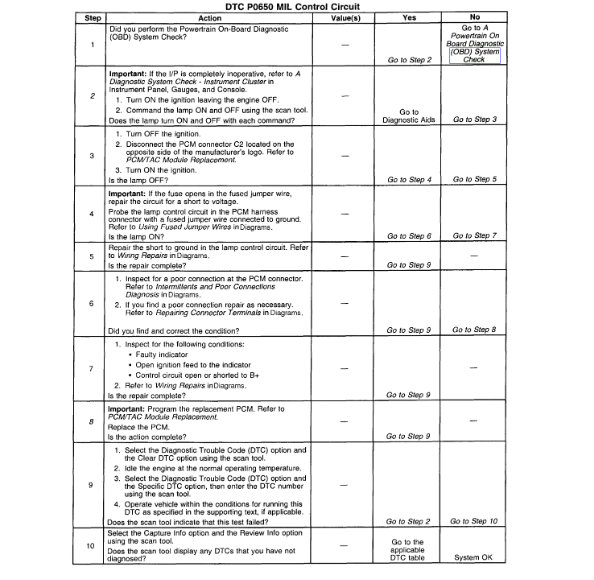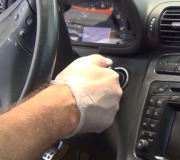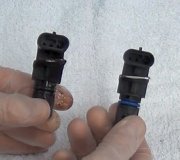Good afternoon,
Just as Steve suggested, it sounds like a connection somewhere from the repair.
Below is an explanation of the code for you to view.
Roy
Circuit Description
A voltage is supplied directly to the Malfunction Indicator Lamp (MIL). The PCM controls the lamp by grounding the control circuit via an internal switch called a driver. The primary function of the driver is to supply the ground for the component being controlled. Each driver has a fault line which is monitored by the PCM. When the PCM is commanding a component ON, the voltage of the control circuit should be low (near 0 volts). When the PCM is commanding the control circuit to a component OFF, the voltage potential of the circuit should be high (near battery voltage). If the fault detection circuit senses a voltage other than what is expected, the fault line status will change causing the DTC to set.
Conditions for Running the DTC
The engine speed is greater than 400 RPM.
The ignition voltage ranges between 6 volts and 18 volts.
Conditions for Setting the DTC
The PCM detects that the commanded state of the driver and the actual state of the control circuit do not match.
All above conditions exist for a minimum of 5.0 seconds.
Action Taken When the DTC Sets
The PCM sets the DTC on the second consecutive ignition cycle that the diagnostic runs and fails.
The PCM records the operating conditions at the time the diagnostic fails. The first time the diagnostic fails, the PCM stores this information in the Failure Records. If the diagnostic reports a failure on the second consecutive ignition cycle, the PCM records the operating conditions at the time of the failure. The PCM writes the conditions to the Freeze Frame and updates the Failure records.
Conditions for Clearing the MIL/DTC
A last test failed (current DTC) clears when the diagnostic runs and does not fail.
A History DTC clears after forty consecutive warm-up cycles, if this or any other emission related diagnostic does not report any failures.
Use a scan tool in order to clear the MIL/DTC.
Diagnostic Aids
Important:
Remove any debris from the PCM/TAC module connector surfaces before servicing the PCM/TAC module. Inspect the PCM/TAC module connector gaskets when diagnosing/replacing the modules. Ensure that the gaskets are installed correctly. The gaskets prevent contaminate intrusion into the PCM/TAC modules.
For any test that requires probing the PCM or a component harness connector, use the Connector Test Adapter Kit J 35616-A. Using this kit prevents damage to the harness/component terminals.
If the ignition feed circuit is suspected of being open, verify that the other indicators on that circuit illuminate.
Using Freeze Frame and/or Failure Records data may aid in locating an intermittent condition. If the DTC cannot be duplicated, the information included in the Freeze Frame and/or Failure Records data can be useful in determining how many miles since the DTC set. The Fail Counter and Pass Counter can also be used to determine how many ignition cycles the diagnostic reported a pass and/or a fail. Operate vehicle within the same freeze frame conditions (RPM, load, vehicle speed, temperature etc.) That were noted. This will isolate when the DTC failed.
For an intermittent condition, refer to Symptoms. See: Computers and Control Systems > Symptom Related Diagnostic Procedures
Test Description
The numbers below refer to the step numbers on the diagnostic table.
2. Command both the ON and the OFF states. Repeat the commands as necessary.
8. If you do not find trouble in the control circuit or the connection at the PCM, the PCM may be faulty. However, this is an extremely unlikely failure.
Image (Click to make bigger)
Monday, December 31st, 2018 AT 1:51 PM




